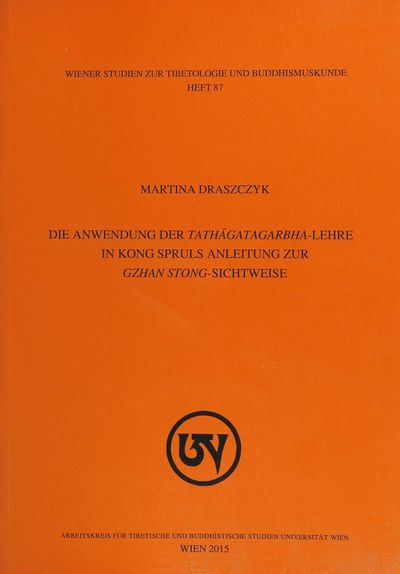The doctrine of tathāgatagarbha as the element inherent in every sentient being is a central concept within Mahāyāna Buddhism. Presenting this Buddha nature as the absolute in positive terms, as a state of gnosis with inconceivable qualities, is the core of the so-called gzhan stong view. Mind as such is understood to be empty of other (gzhan stong), i.e. empty of incidental stains, which are not mind’s nature; but mind is seen to be not empty of its enlightened qualities. Yet, as long as sentient beings are deluded by their incidental or superficial stains, they are incapable of directly relating to these inherent enlightened qualities. According to the relevant texts, this constitutes the only difference to the awakened ones, the buddhas, who, having removed the incidental stains, have actualized their inherent Buddha nature. From the perspective of the doctrine of tathāgatagarbha in general, and from the gzhan stong view in particular, Buddhist philosophy and any spiritual training in ethics, view, and meditation has as its goal the removal the incidental stains so that the buddha qualities can develop or manifest themselves. The book Die Anwendung der Tathāgatagarbha-Lehre in Kong spruls Anleitung zur gZhan stong-Sichtweise deals with the interpretation of Buddha nature in contexts of view and meditation advanced by the scholar monk ’Jam mgon Kong sprul Blo gros mtha’ yas (1813–1899). The introductory section of the book sketches Kong sprul’s historical context. This is followed by a short overview of the topic of Buddha nature from the perspective of its sources in Mahāyāna-sūtras and Indian treatises. Special attention is given to the Ratnagotravibhāga and its relevance to the Mahāmudrā teachings of the bKa’ brgyud pa-tradition of Tibetan Buddhism. The book then examines the development of the gzhan stong view in Tibet. In light of this historical and doctrinal background, attention turns to Kong sprul’s treatment of the gzhan stong position based on his text The Immaculate Vajra Moonrays, an Instruction for the View of Gzhan stong, the Great Madhyamaka. The main focus is on how Kong sprul guides a Buddhist yogin through the process of realization: The analysis of the correct mundane and supramundane view plays just as an important role as the question of which of the Buddha’s teachings are to be understood in a provisional sense (drang don, neyārtha) and which in a definitive sense (nītārtha, nges don). Kong sprul recommends for this analysis in particular the models of the Niḥsvabhāvavāda-Madhyamaka and the Yogācāra-Madhyamaka which to him are synonymous with rang stong- and gzhan stong-Madhyamaka respectively. The book concludes to show how according to Kong sprul the spiritual path which is based in the gzhan stong-view culminates in actualizing tathāgatagarbha. A critical edition of the text and its translation into German form the final part of the book. (Source Accessed Nov 14, 2019)
| Citation | Draszczyk, Martina. Die Anwendung der Tathāgatagarbha-Lehre in Kong spruls Anleitung zur Gzhan stong-Sichtweise. Edited by Birgit Kellner and Helmut Tauscher. Wiener Studien zur Tibetologie und Buddhismuskunde 87. Vienna: Arbeitskreis für Tibetische und Buddhistische Studien Universität Wien, 2015. |
|---|---|



